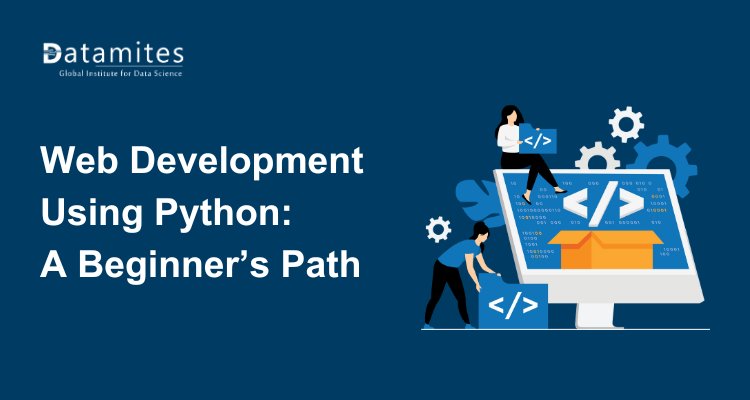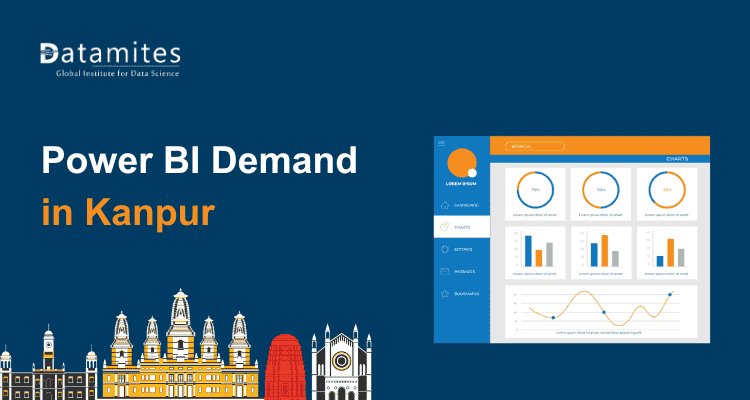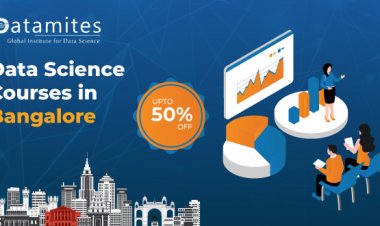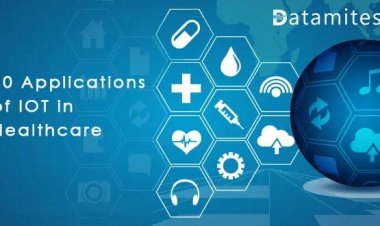Top skill for Data analyst: Python, Excel, SQL
Discover the top skills for a Data Analyst, including Python for Data Analyst, Excel, and SQL. Master essential tools for Data Analyst to enhance data visualization, analysis, and decision-making. Kickstart your Data Analyst career with the right skills and tools for success!
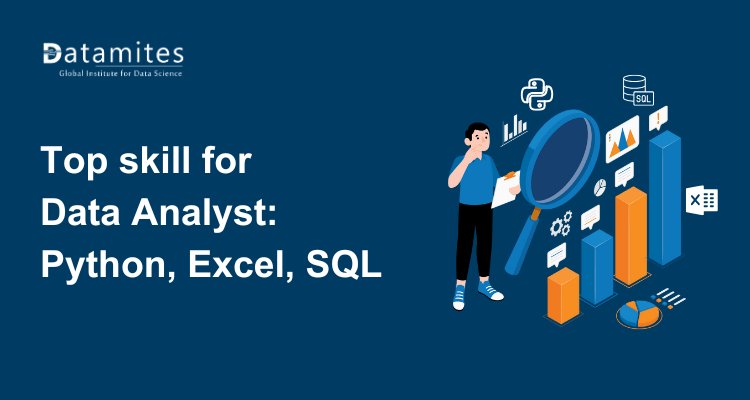
Data analysis has become a cornerstone of decision-making for businesses across all industries. With the growing reliance on data to drive strategies and improve performance, data analysts are more in demand than ever before.
However, the skills required for this role are diverse, and choosing the right tool or programming language can make a significant impact on a data analyst’s ability to perform at a high level.
Among the most important technical skills for data analysts are Excel, SQL, and Python. Each of these tools has unique strengths and purposes, which raises the question: which one is most important? In this article, we will compare Excel, SQL, and Python in terms of their relevance, ease of learning, and industry demand, helping you determine which skill is right for your career goals.
Understanding the Role of a Data Analyst
Before diving into the specifics of each tool, it is essential to understand the role of a data analyst and the skills required for success. Data analysts are responsible for collecting, processing, and analyzing data to generate actionable insights. Their daily tasks include cleaning and transforming data, running statistical analyses, and creating visual reports. They use different tools to manipulate and analyze data efficiently, and their work supports strategic decisions across the organization. According to Allied Market Research, the global big data and business analytics market, valued at $225.3 billion in 2023, is projected to grow substantially, reaching $665.7 billion by 2033, with an estimated CAGR of 11.6% from 2024 to 2033.
Key skills required for Data Analyst:
- Data cleaning and transformation
- Data visualization
- Statistical analysis
- Knowledge of tools like Excel, SQL, and Python
While all three of these tools are commonly used by data analysts, each serves a distinct purpose in the workflow. Excel is widely used for basic data analysis and visualization, SQL is crucial for querying and managing large datasets stored in relational databases, and Python is the go-to language for more advanced data manipulation and automation.
Excel for Data Analyst
Excel has long been a best tool for data analysts. Its simplicity, accessibility, and powerful features make it the go-to choice for many entry-level analysts and business professionals. Whether you're working with small datasets or performing simple analysis, Excel is often more than enough to get the job done.
Key Features:
- Pivot Tables: Pivot tables allow users to summarize large sets of data quickly, making it easier to identify trends and insights.
- VLOOKUP and HLOOKUP: These functions are essential for searching and matching data in large datasets, helping analysts join information from different tables.
- Power Query: Power Query automates data transformation tasks, reducing manual work and improving efficiency.
- Macros: Macros allow analysts to automate repetitive tasks, saving time and reducing errors.
Pros:
- Easy to learn and widely used across industries.
- Great for basic data analysis and visualization.
- Quick to set up and use, without the need for extensive programming knowledge.
Cons:
- Limited scalability when working with extremely large datasets.
- Lacks the flexibility and automation features offered by programming languages like Python.
- Can become cumbersome when dealing with complex tasks, requiring workarounds or manual intervention.
Despite these limitations, Excel remains one of the most essential tools for any data analyst, and widely used for Data visualization, especially when starting a career. It’s an excellent tool to learn and integrate with other technologies as you advance in your career.
Read the article:
- How to Become a Data Analyst With No Experience
- Data Analyst vs. Data Scientist
- The Data Analytics Lifecycle
SQL for Data Analyst
SQL (Structured Query Language) is a powerful tool used for managing and querying relational databases. As organizations accumulate vast amounts of data, SQL becomes essential for retrieving relevant information from large databases, making it one of the most important skills for data analysts working with big data.
Key Concepts:
- Queries: SQL queries allow analysts to extract specific data from databases by defining conditions and filters.
- Joins: Joins are used to combine data from different tables, making it possible to create comprehensive datasets from multiple sources.
- Aggregations: SQL can quickly summarize data with functions like COUNT, AVG, SUM, MIN, and MAX.
- CTEs (Common Table Expressions): CTEs are useful for simplifying complex queries by breaking them into manageable pieces.
Pros:
- Essential for handling extensive datasets stored in databases.
- Fast and efficient for data extraction and manipulation.
- Offers strong support for data integrity and optimization, especially in relational databases.
Cons:
- Requires a fundamental understanding of database design and structure.
- Less suitable for advanced statistical analysis or machine learning tasks.
- Steeper learning curve for beginners compared to Excel.
SQL is indispensable for data analysts working in environments where relational databases are central to business operations. For example, SQL is crucial for retrieving data from customer databases, sales records, or inventory management systems.
Also refer to the articles:
- Highest Paying Jobs in India: Career Opportunities and Insights
- What would be the Machine Learning Course Fee in India
- Mastering Data Analytics in India
Python for Data Analyst
Python has surged in popularity among data analysts in recent years, and for good reason. Its flexibility and extensive library ecosystem make it ideal for both beginner Python projects and more advanced analytics tasks. Whether you're dealing with simple data manipulations or building machine learning models, Python provides the tools and libraries needed for virtually any data analysis challenge.
Key Libraries:
- Pandas: Pandas is the go-to library for data manipulation and analysis, providing easy-to-use data structures like DataFrames.
- NumPy: NumPy is essential for handling large datasets and performing numerical operations.
- Matplotlib and Seaborn: These libraries are used for creating static, animated, and interactive visualizations.
- Scikit-learn: For more advanced analysts, Scikit-learn provides a wide array of tools for machine learning, allowing for predictive modeling and analysis.
Pros:
- Extremely powerful for handling complex and large datasets.
- Great for automation and streamlining repetitive tasks.
- Excellent for building advanced data analysis models, including machine learning algorithms.
Cons:
- Requires more time to learn compared to Excel or SQL.
- Python’s versatility may lead to a steeper learning curve for beginners.
- Can be overkill for smaller tasks that can be accomplished using simpler tools like Excel.
With the increasing demand for advanced data analysis and automation, learning Python is a wise investment for data analyst career aiming to advance in their careers. Python portfolio projects can showcase your skills, and Python for job interviews is becoming increasingly important as employers seek candidates with expertise in this powerful language. Moreover, beginner Python projects are a great way to get started and build experience with real-world data analysis challenges.
Excel vs SQL vs Python: Which One to Choose?
When deciding between the essential tools for data analyst that is Excel, SQL, and Python, it’s important to consider the type of work you do and your career goals. Here’s a quick comparison:
- Excel is ideal for beginners or those working with smaller datasets. It’s user-friendly, great for quick analyses, and effective for creating basic reports and visualizations. However, it’s limited when dealing with large datasets or more complex analysis. Excel is the easiest to start with, offering a user-friendly interface and intuitive features.
- SQL is essential if you're working with large databases or need to query and manipulate structured data. It excels at handling large volumes of data efficiently but lacks the flexibility and advanced analytical capabilities of Python. SQL excels at handling large datasets efficiently but is limited when it comes to advanced analysis or machine learning tasks.
- Python is the most powerful and versatile tool, perfect for advanced data analysis, automation, and machine learning. It can handle complex tasks and large datasets with ease, but it has a steeper learning curve compared to Excel or SQL.
Python's vibrant community thrives both online and offline through various events worldwide. A notable example is PyCon, an international series of conferences dedicated to the Python programming language, held in numerous countries. These gatherings provide opportunities for enthusiasts and professionals to collaborate, share knowledge, and advance their skills.
While all three top tools for data analyst are valuable, Python is becoming increasingly important for those looking to stand out in the data analysis field. It provides better opportunities for career growth, higher salaries, and keeps your skills relevant in the evolving data landscape. Excel and SQL are still essential, but Python is the must-have skill for the modern data analyst.
Python proficiency can lead to increased earnings, enhanced career prospects, and ensures your skill set remains pertinent in the evolving landscape of the Fourth Industrial Revolution.
To maximize your effectiveness as a data analyst, combining Excel, SQL, and Python is often the best approach. Many data analysts use Excel for basic analysis, SQL for data extraction, and Python for automation or more advanced analysis.
Refer to the articles:
- Top IT Courses in Mumbai
- Top IT Courses in Coimbatore
- Top IT Courses in Hyderabad
- Top IT Courses in Chennai
All three skills—Excel, SQL, and Python—play vital roles in a data analyst’s toolkit. Each has its own strengths and weaknesses, and the right choice depends on your career path and the specific challenges you aim to solve. By learning the right combination of these tools, you can get hired with Python or use Python for job interviews to stand out in a competitive job market. Whether you are just starting out with beginner Python projects or advancing into more complex fields like data science, mastering these tools will set you up for success in the data-driven world.
Enrolling in an offline Data analyst course in Bangalore and other major tech hubs like Chennai, Pune, Bangalore, Ahmedabad, Coimbatore, Delhi, Jaipur, and Mumbai provides valuable industry exposure, networking opportunities, and improved job prospects, building a strong foundation for a successful career in data analysis and software development.
In the Excel vs SQL vs Python debate, the best skill for data analysts depends on job needs. Excel is great for quick analysis, SQL excels in database management, and Python enables advanced analytics. Mastering all three enhances career prospects, making you a versatile data professional in today’s data-driven world.
DataMites Institute is a top choice for those looking to build careers in data science and analytics. Committed to offering industry-leading courses, DataMites provides a comprehensive curriculum with live training and a job-focused approach, equipping learners with essential practical skills for today’s competitive job market.
DataMites Institute offers offline data analyst courses in Chennai, Hyderabad, Bangalore, Pune, Ahmedabad, Jaipur, Coimbatore, Delhi, and Mumbai, providing flexible learning options for students.
The institute offers flexible learning options, including online classes and offline training, catering to various learning needs. Students receive expert mentorship and gain hands-on experience through real-time projects and internships. Accredited by prestigious organizations like IABAC and NASSCOM FutureSkills, DataMites ensures high-quality, industry-relevant education. With a growing community of over 1,000 learners, it continues to be a trusted platform for aspiring professionals.


